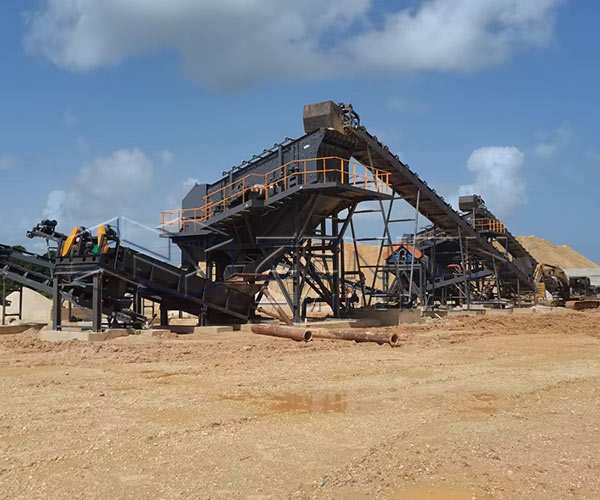
Silica sand, a fundamental material in glassmaking, foundry molds, hydraulic fracturing, and construction, must meet stringent quality standards. The removal of impurities such as clay, silt, and organic matter is essential to achieve the desired purity. A silica sand washing plant is the facility where this purification and size classification process occurs. This guide provides a detailed overview of the equipment, operations, and optimization practices essential to maintain efficient and high-quality production.
Silica sand is primarily composed of silicon dioxide (SiO₂), often mixed with contaminants from mining or natural deposits.
Without washing, the raw sand may not meet industry specifications for purity and consistency, leading to product defects and reduced performance.
A silica sand washing plant operates through several interdependent stages, each contributing to the overall refinement of the material.
The raw sand is fed into hoppers and conveyed to a vibrating screen.
Oversized materials such as stones and debris are separated and removed.
The sand passes through a scrubber where high-pressure water jets and mechanical agitation remove coatings and sticky impurities.
Attrition cells enhance particle-to-particle friction, improving the cleaning effect.
Hydrocyclones or spiral classifiers separate fine clay particles from the sand.
Clean water is circulated to maintain consistent washing quality.
Vibrating dewatering screens remove excess moisture.
Depending on the application, sand may be further dried using rotary or fluid bed dryers.
The washed sand is graded by size using vibrating screens or sifters.
Final products are stored in silos or stockpiles for distribution.
A well-designed silica sand washing plant integrates multiple types of specialized equipment to ensure continuous and efficient operation.
Used to control the material flow rate from the hopper to the screens or scrubbers.
Equipped with variable speed drives for flexible operation.
Perform the first step in removing oversized particles.
Multi-deck screens enable grading into several size fractions.
Utilize intensive mechanical action to separate clay and remove surface coatings.
The design can be single or multiple cell configurations depending on capacity.
Classify particles by size and density using centrifugal force.
Efficiently remove fines and slimes that affect final purity.
Reduce water content in sand and recover water for reuse.
Filter presses further handle wastewater to minimize discharge.
Closed-loop water systems minimize fresh water consumption.
Sludge thickening tanks and flocculant dosing systems enhance environmental compliance.
Even well-maintained plants can face operational challenges. Some of the most common include:
Solution: Increase attrition time or install additional scrubbing stages.
Solution: Install adjustable feeders or use flow splitters to maintain uniformity.
Solution: Optimize dewatering screen angle and vibration frequency.
Solution: Employ fines recovery systems or additional hydrocyclones.
Solution: Upgrade water recycling systems and check sedimentation tanks regularly.
Effective troubleshooting minimizes downtime, extends equipment life, and ensures consistent product quality.
Modern silica sand washing plants are designed to minimize environmental impact through advanced water and waste management systems.
Sedimentation tanks and thickeners recover up to 90% of process water.
Flocculants accelerate particle settling for efficient separation.
Dewatered sludge can be repurposed for land reclamation or disposed of safely.
Enclosed conveyors and acoustic barriers reduce emissions and noise levels.
Operators must adhere to local environmental and wastewater discharge standards.
By integrating eco-friendly systems, plants reduce operating costs and meet sustainability goals.
Optimization is a continuous effort, combining technology upgrades, training, and data-driven decision-making.
A silica sand washing plant is a complex system integrating mechanical, hydraulic, and control technologies. Success depends on selecting the right equipment, maintaining operational discipline, and embracing sustainable practices. With regular maintenance, process monitoring, and adherence to environmental standards, operators can achieve consistent product quality and long-term profitability.
We have jaw crushers, impact crushers, cone crushers, sand makers and so on.
Mon - Sun, 0:00 - 24:00
24h Online Service
© Zenith. All Rights Reserved. Designed by
